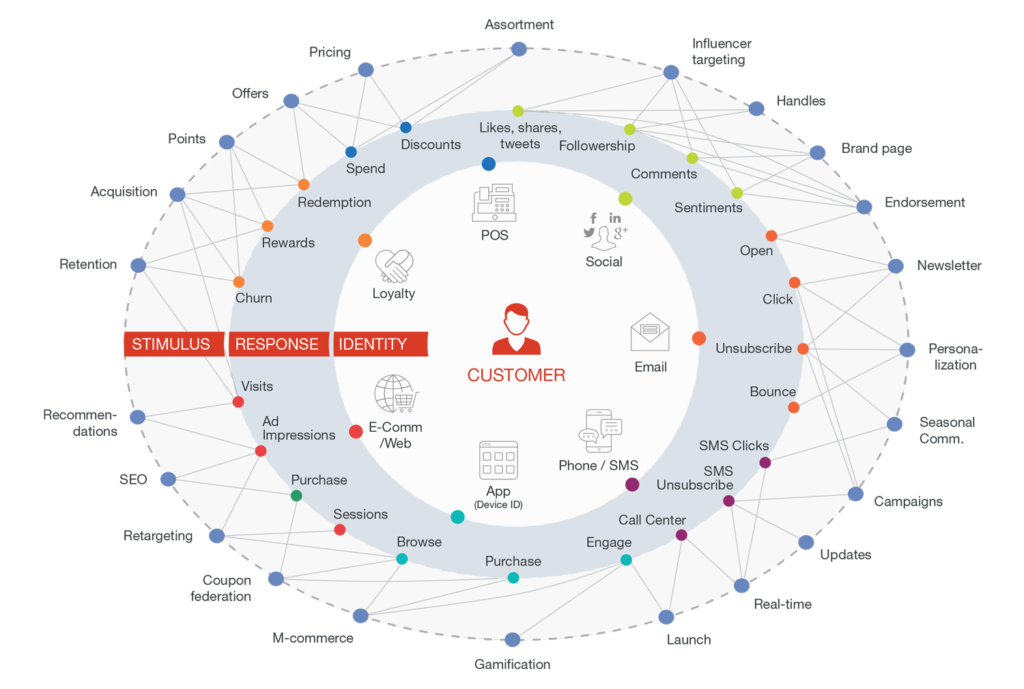What’s Driving the Booming Demand for Customer Analytics
February 22, 2019Forbes recently highlighted the top five B2B marketing trends for 2019. First among these trends is the burgeoning demand for real-time and enriched customer analytics: offering key insights that enable B2B marketers to deliver experiences meeting the individual needs and wants of their customers.
Let’s explore what’s behind this trending demand for customer analytics, and how analytics platforms will help shape B2B marketing and the customer experience in 2019.
Marketers are frustrated with their customer data
Many B2B marketers are profoundly frustrated with the state of their customer data. For some, it’s segregated into siloes, and this segregation inhibits effective multi-channel communications. For others, their data is available but it’s unstructured and un-actionable. And, there are cases of data and key insights being accessible to few (perhaps senior leadership) but not the near-the-customer people/marketers who need it to deliver better, real-time customer experiences. The bottom line is that marketers can’t access their data in an efficient way to meet the expectations of their customers.
With such fragmented and disconnected customer data aggregation and analysis, the customer insights that do get delivered to marketers are – it comes as no surprise – fragmented and disconnected. Marketers are skeptical about trusting those insights, and their lack of trust is fully justified.
What these B2B marketers want instead of fragmented, un-actionable data is customer analytics via accessible and actionable insights that allow them to better understand and engage their customers (for example by anticipating cross-selling and up-selling opportunities). With customer analytics, marketers can target the right customer with the right message at the right time. That’s ROI-driving relevancy.
B2B marketers can’t separate the signal from the noise because they’re drowning in raw, unstructured data. The noise is everywhere, but they’re listening for that one special signal, that one piece of relevant customer data that can help inform decision-making and drive a better CX.
Why customer analytic platforms are “in” for 2019
The emerging solution to these data management woes are customer analytics platforms that provide B2B marketers with crucial insights about customer behaviors throughout the CX, while connecting customer data across various systems and channels. You have full access to the signals you want, and the noise gets eliminated.
A great customer analytics platform needs to do two things: first, aggregate your customer data and second, render it actionable.

One layer of an analytics platform might pull all your organization’s collected data into one platform. It would then standardize your customer data, remove duplicates, and enhance it with missing information. B2B marketers would thus get one crystal clear view (a single source of truth across the organization) of the customer that’s as close to a real-time representation as possible.
Then there’d be another layer that analyzes customer data, in near real-time, to provide deep, actionable insights that support smarter marketing to drive ROI. That’s the leveraging part. By uncovering valuable trends and patterns in your customer data, you can map the customer’s journey and reach out to them with the most timely, relevant, and personalized messaging to enhance customer engagement. You can even do so in automated, AI-enabled ways that serve as an “always-on” customer nurturing engine.
Customer analytics will drive B2B marketing success in 2019
Caroline Robertson of Forrester Research is quoted at length in the Forbes article. Ms. Robertson puts things simply: “Most B2B marketers have low confidence in the quality of their data and their data management skills. To reconcile their numerous data silos – and enable the customer-driven engagement the modern B2B buyer demands across the entire lifecycle – many B2B marketers” are turning to customer analytics platforms for answers.
As explained above, these platforms offer massive advantages over fragmented, unfiltered (raw) data, most notably time-to-value. You don’t waste your time drowning in unfiltered data, and searching for relevant customer data. You get the signals that customers are sending you, and you can then leverage them in a timely, relevant manner, even through automation. Make 2019 the year you find better ways to access and leverage the relevant data you need to inform better B2B marketing.


